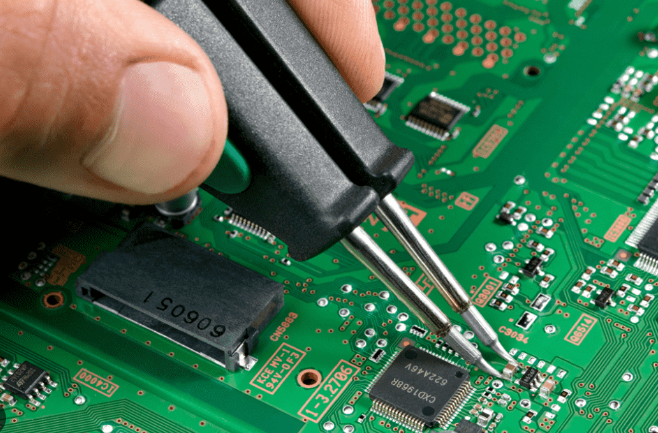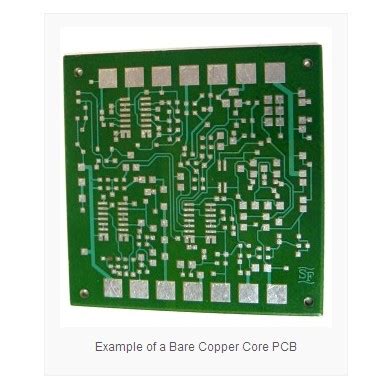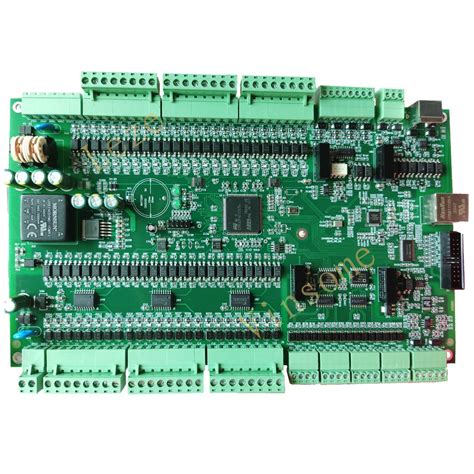What is a PCBA?
In the realm of electronics manufacturing, the term PCBA stands for Printed Circuit Board Assembly. It represents a crucial stage in the production of electronic devices, where various electronic components are mounted onto a printed circuit board (PCB) to create a functional electronic assembly. This article delves into the intricacies of PCBA, exploring its definition, the processes involved, its significance in electronics manufacturing, and the various types and applications of PCBA.
1. Understanding the Basics: PCB vs PCBA
Before diving into the specifics of PCBA, it is essential to differentiate between a PCB and a PCBA.
- PCB (Printed Circuit Board): A PCB is the physical board that provides the mechanical support and electrical connections for electronic components. It is typically made of a non-conductive substrate, such as fiberglass, with conductive pathways etched or printed onto its surface. These pathways, known as traces, connect different components on the board, allowing electricity to flow between them.
- PCBA (Printed Circuit Board Assembly): A PCBA, on the other hand, refers to the PCB after all the necessary electronic components have been mounted and soldered onto it. In other words, a PCBA is a fully assembled PCB that is ready to be integrated into an electronic device.
2. The PCBA Process: From Bare Board to Functional Assembly
The process of transforming a bare PCB into a functional PCBA involves several steps, each of which is critical to ensuring the final product’s reliability and performance. The main stages of the PCBA process include:
2.1. Component Sourcing and Procurement
The first step in the PCBA process is sourcing the necessary electronic components. These components can range from simple resistors and capacitors to complex integrated circuits (ICs) and microprocessors. The components must be carefully selected based on the design specifications of the PCB, ensuring compatibility and performance.
2.2. Solder Paste Application
Once the components are sourced, the next step is to apply solder paste to the PCB. Solder paste is a mixture of tiny solder particles and flux, which helps the solder adhere to the PCB and components. The solder paste is typically applied using a stencil, which ensures that the paste is deposited only in the areas where components will be placed.
2.3. Component Placement
After the solder paste is applied, the electronic components are placed onto the PCB. This can be done manually for small-scale production or prototyping, but for large-scale manufacturing, automated pick-and-place machines are used. These machines can place hundreds or even thousands of components onto a PCB with high precision and speed.
2.4. Reflow Soldering
Once the components are placed, the PCB is passed through a reflow oven. The reflow oven heats the PCB to a temperature that melts the solder paste, creating a strong electrical and mechanical bond between the components and the PCB. The temperature profile in the reflow oven is carefully controlled to ensure that the solder melts evenly and that the components are not damaged by excessive heat.
2.5. Inspection and Testing
After the reflow soldering process, the PCBA undergoes inspection and testing to ensure that all components are correctly placed and soldered, and that the assembly functions as intended. Various inspection methods can be used, including visual inspection, automated optical inspection (AOI), and X-ray inspection. Functional testing may also be performed to verify that the PCBA meets the required performance specifications.
2.6. Cleaning and Coating
In some cases, the PCBA may be cleaned to remove any flux residue or contaminants that could affect its performance or longevity. Additionally, a conformal coating may be applied to protect the PCBA from environmental factors such as moisture, dust, and chemicals.

3. Types of PCBA
PCBA can be categorized based on the type of components used, the complexity of the assembly, and the intended application. Some common types of PCBA include:
3.1. Through-Hole Technology (THT) PCBA
Through-hole technology involves mounting components onto the PCB by inserting their leads through holes drilled in the board and soldering them on the opposite side. THT components are typically larger and more robust than surface-mount components, making them suitable for applications where mechanical strength and durability are important.
3.2. Surface-Mount Technology (SMT) PCBA
Surface-mount technology involves mounting components directly onto the surface of the PCB without the need for holes. SMT components are generally smaller and lighter than THT components, allowing for higher component density and more compact PCB designs. SMT is the most widely used technology in modern electronics manufacturing.
3.3. Mixed Technology PCBA
Some PCBAs combine both THT and SMT components, leveraging the advantages of both technologies. For example, a mixed technology PCBA might use SMT for small, high-density components and THT for larger, more robust components that require additional mechanical support.
3.4. High-Density Interconnect (HDI) PCBA
HDI PCBAs are characterized by their high component density and fine-pitch components. They are used in applications where space is at a premium, such as smartphones, tablets, and other portable electronic devices. HDI PCBAs often involve advanced manufacturing techniques, such as laser drilling and microvias, to achieve the required level of miniaturization.
3.5. Flexible and Rigid-Flex PCBA
Flexible PCBAs are made using flexible PCB materials, allowing them to bend and conform to different shapes. Rigid-flex PCBAs combine both rigid and flexible sections, offering the benefits of both types of boards. These PCBAs are commonly used in applications where space and weight are critical, such as in aerospace, medical devices, and wearable electronics.

4. Applications of PCBA
PCBA is a fundamental component of virtually all electronic devices, from simple consumer electronics to complex industrial machinery. Some common applications of PCBA include:
4.1. Consumer Electronics
PCBA is used in a wide range of consumer electronics, including smartphones, tablets, laptops, televisions, and home appliances. The demand for smaller, more powerful, and energy-efficient devices has driven the development of advanced PCBA technologies, such as HDI and SMT.
4.2. Automotive Electronics
Modern vehicles rely heavily on electronic systems for functions such as engine control, infotainment, navigation, and safety. PCBA is used in various automotive applications, including engine control units (ECUs), sensors, and advanced driver-assistance systems (ADAS).
4.3. Industrial Electronics
In industrial settings, PCBA is used in control systems, automation equipment, and machinery. Industrial PCBAs must often withstand harsh environments, including extreme temperatures, vibrations, and exposure to chemicals.
4.4. Medical Devices
Medical devices, such as imaging equipment, patient monitors, and diagnostic tools, rely on PCBA for their functionality. Medical PCBAs must meet stringent quality and reliability standards, as they are often used in critical healthcare applications.
4.5. Aerospace and Defense
In the aerospace and defense industries, PCBA is used in avionics, communication systems, and navigation equipment. These PCBAs must be highly reliable and capable of withstanding extreme conditions, such as high altitudes, temperature fluctuations, and radiation.

5. The Importance of PCBA in Electronics Manufacturing
PCBA is a critical step in the electronics manufacturing process, as it transforms a bare PCB into a functional electronic assembly. The quality and reliability of the PCBA directly impact the performance and longevity of the final product. As such, PCBA requires careful attention to detail, precision, and adherence to industry standards.
5.1. Quality Control
Quality control is a vital aspect of PCBA manufacturing. Defects in the PCBA, such as poor solder joints, misaligned components, or contamination, can lead to device failure or reduced performance. To ensure high-quality PCBAs, manufacturers employ various inspection and testing methods, including AOI, X-ray inspection, and functional testing.
5.2. Design for Manufacturability (DFM)
Design for manufacturability (DFM) is an approach that involves designing PCBAs with the manufacturing process in mind. By considering factors such as component placement, solderability, and ease of assembly during the design phase, manufacturers can reduce the risk of defects and improve the overall efficiency of the PCBA process.
5.3. Miniaturization and Innovation
The trend towards miniaturization in electronics has driven innovation in PCBA technology. As devices become smaller and more powerful, PCBAs must accommodate higher component densities and more complex designs. This has led to the development of advanced manufacturing techniques, such as HDI and flexible PCBA, which enable the production of compact, high-performance electronic assemblies.
6. Challenges in PCBA Manufacturing
Despite the advancements in PCBA technology, manufacturers face several challenges in producing high-quality PCBAs. Some of these challenges include:
6.1. Component Availability
The global electronics supply chain is complex, and component shortages can disrupt PCBA production. Manufacturers must carefully manage their inventory and establish relationships with reliable suppliers to ensure a steady supply of components.
6.2. Complexity of Designs
As electronic devices become more sophisticated, PCBAs must accommodate increasingly complex designs. This can make the PCBA process more challenging, requiring advanced manufacturing techniques and equipment.
6.3. Environmental and Regulatory Compliance
PCBA manufacturers must comply with various environmental and regulatory standards, such as the Restriction of Hazardous Substances (RoHS) directive and the Waste Electrical and Electronic Equipment (WEEE) directive. Compliance with these standards can add complexity to the manufacturing process and require additional testing and documentation.
7. Conclusion
In summary, a PCBA is a fully assembled printed circuit board that serves as the backbone of electronic devices. The PCBA process involves several critical steps, from component sourcing and solder paste application to reflow soldering and inspection. PCBA is used in a wide range of applications, from consumer electronics to aerospace and defense, and plays a vital role in the functionality and performance of electronic devices.
As the demand for smaller, more powerful, and energy-efficient devices continues to grow, PCBA technology will continue to evolve, driving innovation in electronics manufacturing. Despite the challenges, PCBA remains a cornerstone of the electronics industry, enabling the production of the devices that power our modern world.







